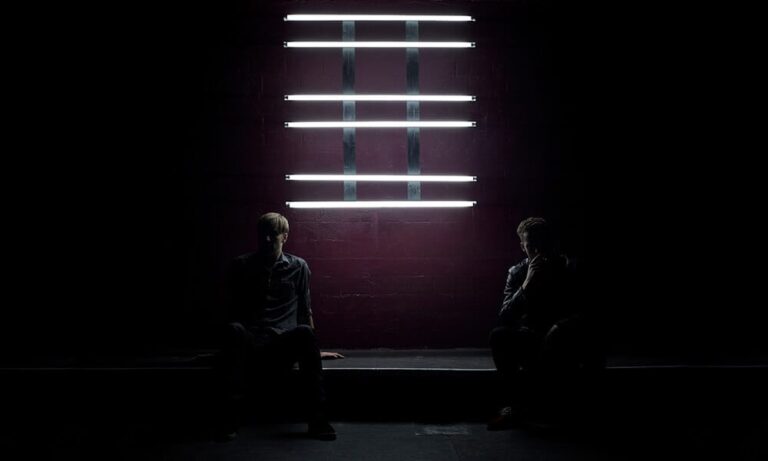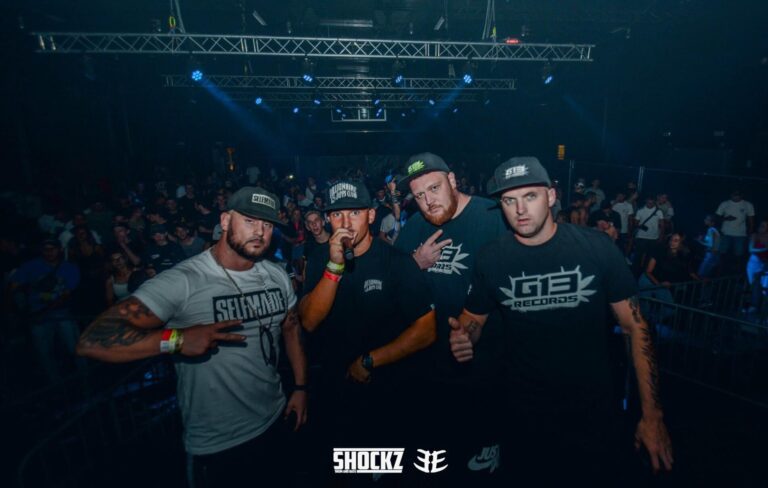The most influential and enduring musical movements can always be traced back to a location, city or venue. A community where the balance of melting pot ingredients and unique chefs are precision balanced to cook a whole new meal. Dubstep had Croydon, Big Apple and Plastic People. House music had Chicago, New York, Warehouse and Paradise Garage. Acid house had Shoom, Spectrum, Land Of Oz (to name a few)
Jungle had Rage, a weekly Thursday session in London’s Heaven, captained by Fabio, Grooverider, Colin Faver and Trevor Fung that lasted from 1988 to 1995.
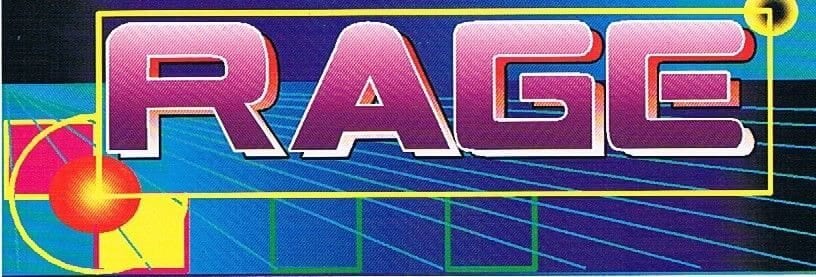
The music wasn’t called jungle back then. In fact the music wasn’t commonly referred to as jungle until around 93 (although there’s evidence of the term going back as far as 91) As far as Fabio and Grooverider were concerned at the time it was all called house. But if you trace the jungle movement back to its most nascent forms – the beats, bass, breaks, samples and soundsystem aesthetics – then Fabio & Grooverider were two of the most integral selectors from the very beginning. And Rage is where they fine-tuned their blend each and every week.
It was all in the selection. Two self-proclaimed music trainspotters, both DJs had come from a deep-digging wax background. So the same rule applied when they began to explore electronic paths and began mixing records from different corners of the burgeoning acid house scene. Bumping New York Strictly Rhythm cuts rubbing up against Sheffield Warp bleeps and Belgian techno; anything went into Fabio and Grooverider’s mix. Even when other DJs advised them not to… Or even told them to play more vocals.
In the words of Fabio, they were “into the tracks that were banging. Raw instrumentals.” They’d spend the week leading up to each gig finding the tracks that would fit their darker, heavier take on the acid house spectrum. Their blend became so successful their residency upstairs moved down to the cavernous main room where it could get even darker, faster, heavier and become a whole new banquet.
This is where it all began; a location where a new movement would take root and where young Photeks, Dillinjas and Goldies were all inspired. But to catch the roots of Rage itself we need to go back to Fabio & Grooverider’s first ever gig together in a Brixton club circa 1987…
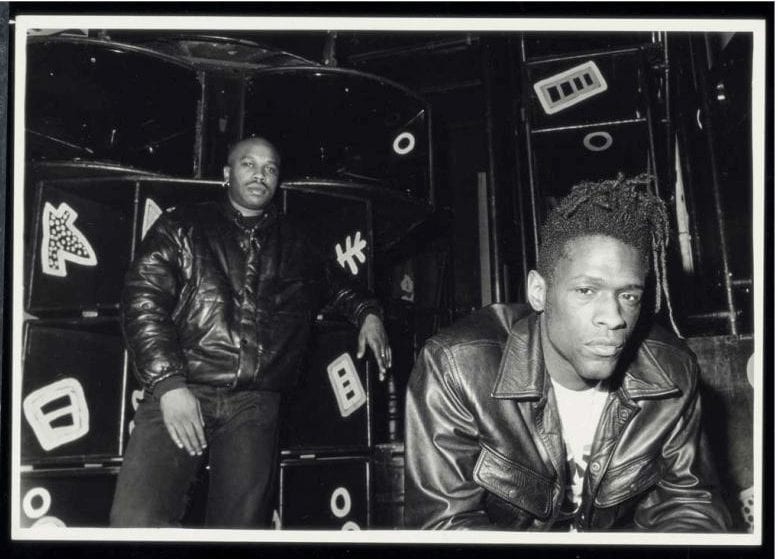
Let’s go back a bit further than Rage. I think this all began at a gig in a club called Mendozas the year before, right?
Grooverider: Yeah we’d been DJing for years before, rare groove and all that, but this was our first kinda rave experience. The first time we saw people who took drugs on a massive scale. We smoked weed and all that, but ecstasy was a whole new ballgame to me. It freaked me out to be honest because they were dancing like loons. Never ever been to an acid house night and the first one I go to I’m DJing at it. I had no idea. I thought it would be like a normal funk party.
Fabio: We were just trainspotting house heads. We just loved the music, were digging into it and collecting what we could. It was so new and exciting and because we had these records and we DJ’d on Phase One we were asked to do the gig. We’d never played house records in a club before. We’d never seen anything like it. People putting their heads in the speakers and running around with their tops off.
Grooverider: It was a Thursday night and didn’t kick off until three in the morning and all.
Fabio: Yeah that made it even weirder and more freaky. But it was mad, and a lot of fun, so we sat down and talked about doing some more. We were never gonna make any money off it – we were charging £2 a head on the door! But that is the first night and it made us do them again so that was the very start of Rage.
Join the dots between that and Rage?
Grooverider: We did a few at Stone Crow, which was a wine bar. That was weird too. Acid house in a wine bar. But that did okay. And by then we were being invited to play in all the warehouse raves which was a whole other level of crazy people dancing.
Fabio: We were just really entertained by the whole thing. We were getting to play this music we were really into to people who were really really enjoying it. We were all doing our thing and it branched out beyond belief. But even then we still thought it was just a hobby. Nothing serious or a career intention. Groove had a job for a long time… Until he lost it.
Grooverider: I kept falling asleep in the toilets. I’d lose two or three hours. The boss said ‘I could hear you snoring in there!’ Sling your hook, pretty much. But he did me a favour, didn’t he? I may never have focused on DJing so much or taken it so seriously.
Amazing. What job was that?
Grooverider: I was an accounts rep working for a plant hire company supplying machinery. I quite liked the job, I was happy there. But, yeah, I kept coming straight into work after DJing and falling asleep.
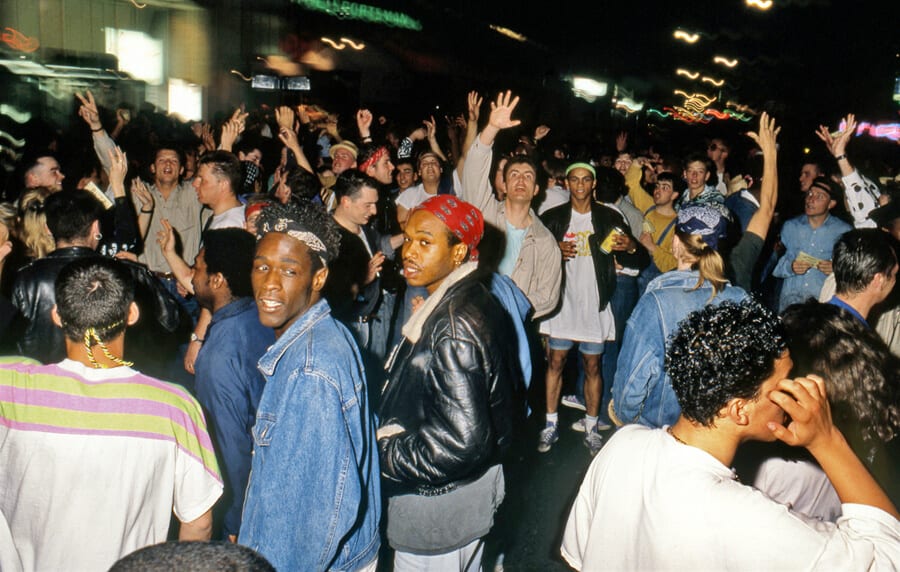
Ha. With it being on a Thursday Rage kinda kicked off the weekend for many didn’t it?
Fabio: Absolutely. It meant we could do our thing and play wherever on the weekend but still do this. And the best thing is that it never felt like a Thursday night in there. You know some clubs you go to on a Thursday night and you can feel it ain’t quite the weekend yet? You never got that at Rage. It felt like the weekend. The atmosphere was so intense. I don’t know how people went to work afterwards. So yeah it was the start of the weekend and what a way to do it. Then you had the Wag club on Friday and Nicky Holloway had The Trip, there were a few acid house nights happening but we had our own stamp on it and took it in a darker direction.
It was so popular you never had guest DJs, right?
Fabio: Yeah. It us two upstairs, Colin Faver and Trevor Fung downstairs. Just us lot. It wasn’t the days when you needed big DJs to fill a club anyway, the music was so fresh people were going out for it regardless of who was playing it. But Rage was one of the first kinda brand names that stuck. People saw Rage and they knew the sound we had and what we did. We were upstairs but then things got so busy we were moved downstairs. The transition was pretty smooth – we did what we did upstairs but did it on a bigger scale.
Did that ruffle the more purist house head’s feathers when you got moved downstairs?
Grooverider: What you got to remember is the reason we went downstairs is because people weren’t going downstairs anymore, they were all coming upstairs to us. That’s why we got down there. We were still playing house music anyway, just more on the tougher side.
Fabio: It ruffled more feathers when we started bringing more breakbeats in. That’s when the purists started to get upset. The younger kids coming through were well into that and the purists who loved just straight up house didn’t like that. We didn’t care, we could just see it getting busier and busier in there. That’s all we cared about; we were bringing in the young cool crowd, we didn’t want the old purists. The promoter was happy, we were happy because we could push things as far as we wanted. We had the place every week to try these things and it was amazing.
Grooverider: And the thing was, we weren’t calling it anything but house. It didn’t matter if it had more of a techno thing going on, trance, breakbeat, whatever. As far as I was concerned it was still house.
Fabio: There were boundaries to some people. Some guys saying like ‘oh you can’t mix techno with that house record’ or whatever. We didn’t really care. A DJ came up to me and said ‘why don’t you play vocal music? The vocals are everything about the music.’ We were like ‘it might be to you.’
Grooverider: We’re not all built the same.
Fabio: We dropped the odd vocal but we were into the tracks that were banging. Raw instrumentals. We were digging the B sides or C sides. Finding the mixes. The beats tracks and dubs and instrumentals and that was part of the fun of it, doing that digging.

Lennie De Ice is always championed from this era as a formative tune that inspired the sound. Future Sound Of London’s Papa New Guinea was a persy for me. How about your own favourites?
Fabio: Bizarre Inc’s Playing With Knives comes to mind because it had everything we wanted from a track; the breakbeats, the bass but also had that little element of vocal in it.
Grooverider: Frankie Bones’ Bonesbreaks. That series was another level.
Fabio: He did about 14 of the series and we lived for them. The New York stuff always kicked. Right from the start you’d be drawing for guys like Frankie, Masters At Work. They had that kick to their tunes man. Todd Terry, too. He had that little bump to his groove and that bass.
Grooverider: Pretty much anything on Nu Groove and Strictly Rhythm.
Fabio: Man the dubs on Strictly Rhythm were banging. That was just as much of the sound of Rage as anything else.
Grooverider: All the R&S stuff, Frank De Wulf. Loads of mad stuff from Belgium.
Fabio: It was a massive melting pot. No one was using the word jungle but that was where it started, in among all them sounds there.
Long before things split
Grooverider: Yeah exactly. It hadn’t gone that way by then. All them big pianos and pitched up vocals.
Fabio: We had nothing against the pitched-up vocals, it just wasn’t our thing. And you did see things going in two clear ways. You’d see it at the big raves where you’d have guys like us, Micky Finn, Carl Cox then guys like Slipmatt, DJ Sy, Seduction. The music was going those two ways and you did make a conscious decision which crowd you were playing to as a DJ and that made us push into the jungle sound. That was when it did become very much a thing and everyone was using the word. Before that it wasn’t so regimented. We all played together. That was 92/93.
That was near the end of Rage’s tenure at Heaven. It never petered out did it? It ended on a high and you both went onto other massive residencies…
Fabio: What was great was that we went from Rage to Speed and Metalheadz and that covered what we were all about. Groove’s role at Metalheadz was the pinnacle of that futuristic sound. The shit that really pushed the music and boundaries. Then on the other side I had the groove and soul based stuff at Speed. So between us we carried on pushing the music and developing it from the two sides of the genre. We were still Fab & Groove but it was mad that we got these huge residencies that played such an important role in the music. And between us we had music that could take you through the entire night.
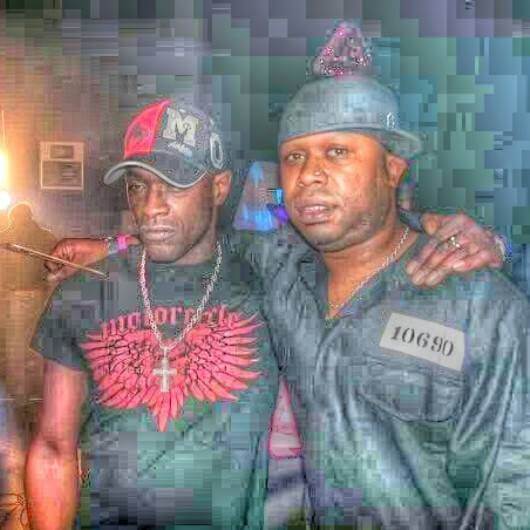
I love how so many people say they went to Blue Note and Speed but blatantly didn’t
Fabio: Yeah man, they were tiny clubs! Speed was 250 tops, Metalheadz maybe bigger but there’s no way everyone who said they went did because they wouldn’t have fit. These places were small but again we didn’t consciously do this – we didn’t plan it but we had the whole genre covered musically between us. Those residencies took us to the top of the game. It was a mad time.
I’m sure you’ve had peers telling you they were converted or inspired to make music at Rage?
Grooverider: Goldie was definitely influenced by it. A very young DJ Fresh I think, too.
Fabio: Photek, Dillinja. A lot of garage guys. A big garage club promoter once told me Rage was the reason he got into it. So many people have told us stuff like that which has been amazing and very humbling to hear. You don’t think about that shit when you’re doing something and having fun. That’s all we were doing.
There’s another interview out there about the history of Rage where it ends with you say you couldn’t be bothered to turn up some weeks?!
Grooverider: Nah nah haha. That never happened.
Fabio: Rubbish. I looked forward to it every week. We’d be buying our tunes on the weekend and spending the week sorting them out, practicing and getting our music together before the Thursday. We genuinely lived for Rage. I don’t know where that quote came from!
If you could take anything from that era and bring it back to now what would it be?
Fabio: I’d take the open-minded attitude that people had and just listen to drum & bass for drum & bass. No silly subgenres or categories. Just drum & bass. It’s the same with house – people are like ‘ah that’s tech house, that’s funky house’. I’d like it to be more universal.
Grooverider: It’s either good music or bad music, that’s it.
Fabio: I did like the fact that people would just go to hear good music and not go for a particular DJ or a particular brand. There’s a few things I’d bring back but there’s a lot of things I love more about now. I’m not one of those people who thinks the old days are better
Grooverider: Neither of us are. We wouldn’t be around still doing this if we did. Long may it continue…
Support: 30 Years Of Rage Part 1 / 30 Years Of Rage Part 2 / 30 Years Of Rage Part 3 & 4 are out June 21
Follow Fabio & Grooverider / Follow Fabio / Follow Grooverider

